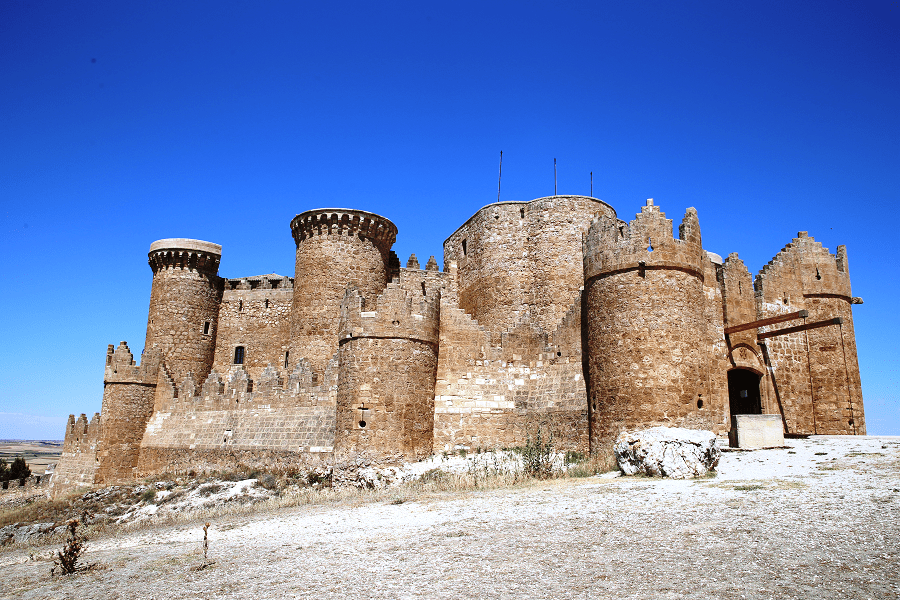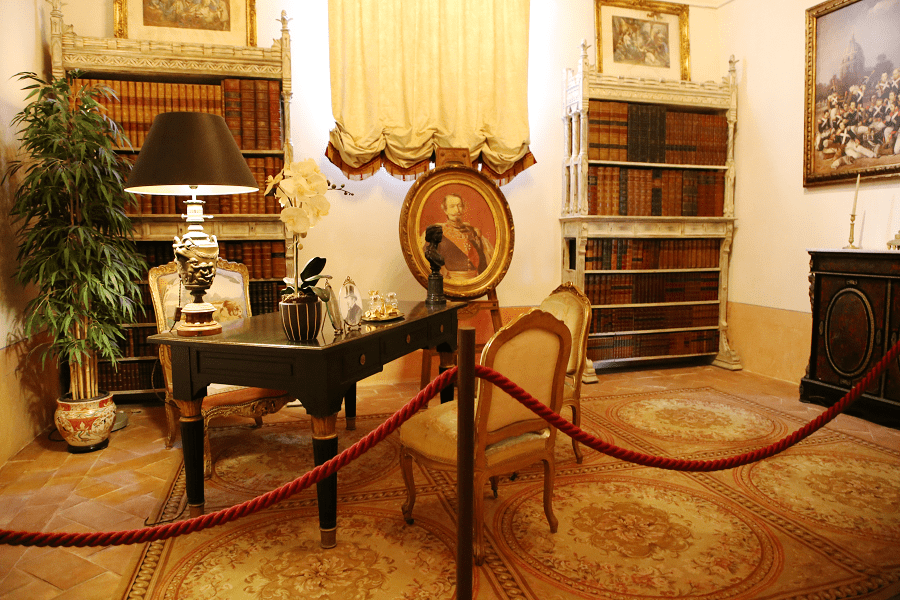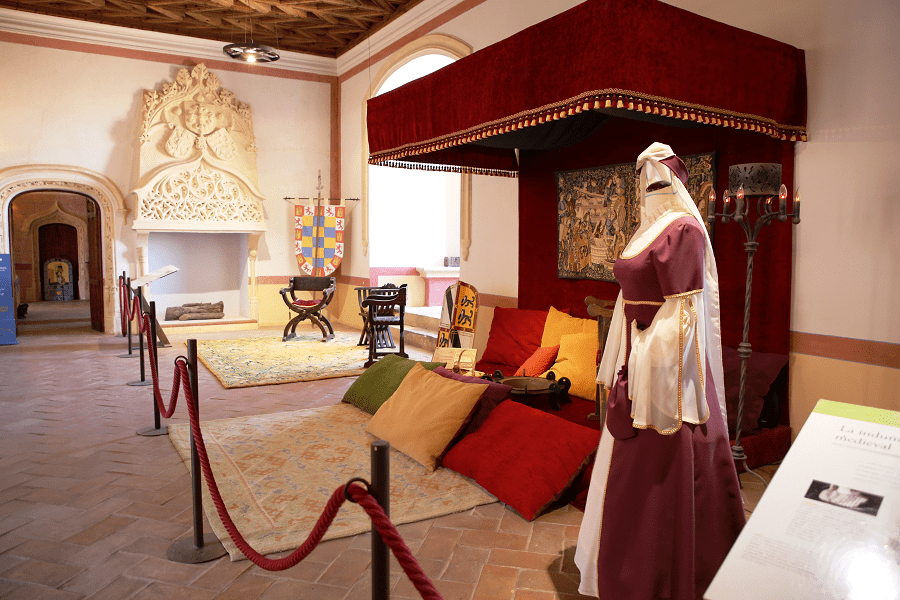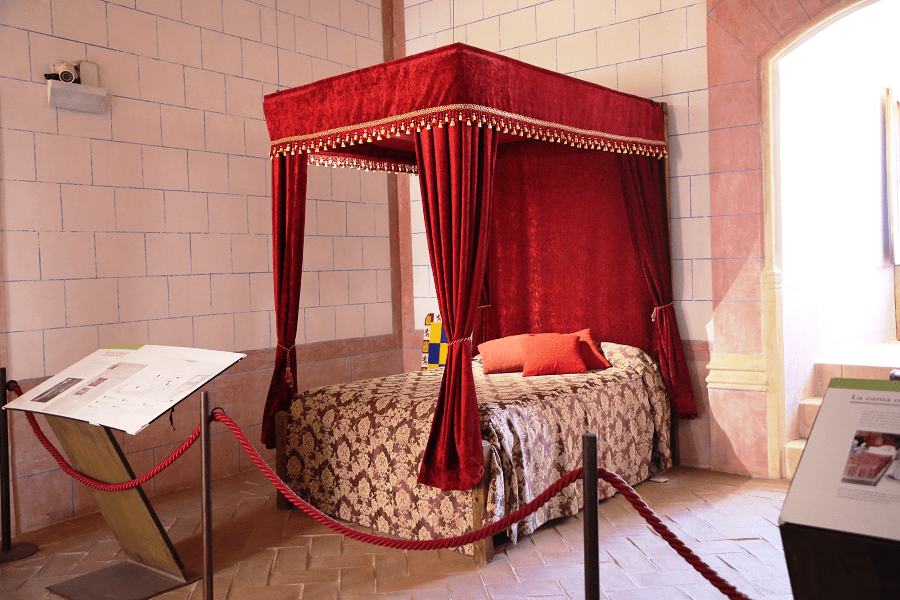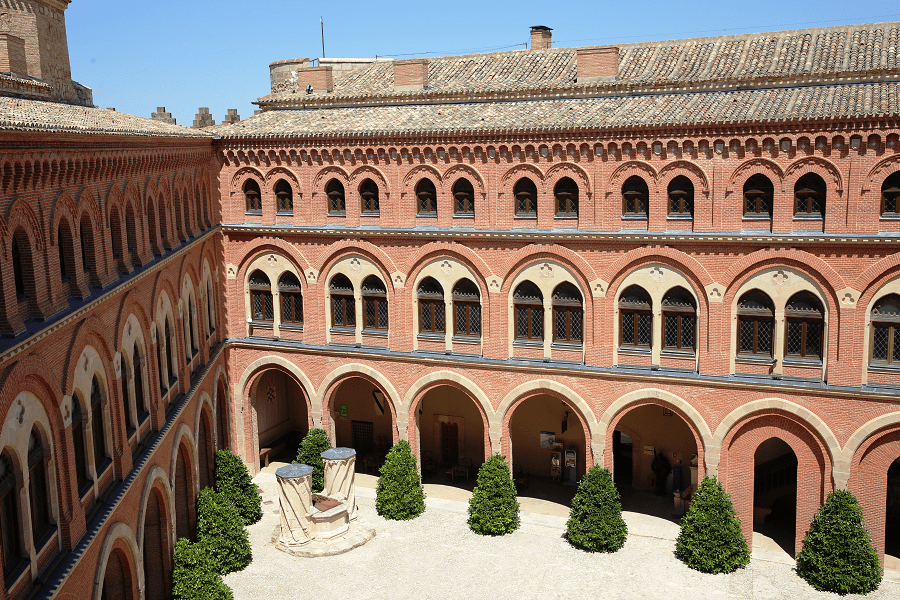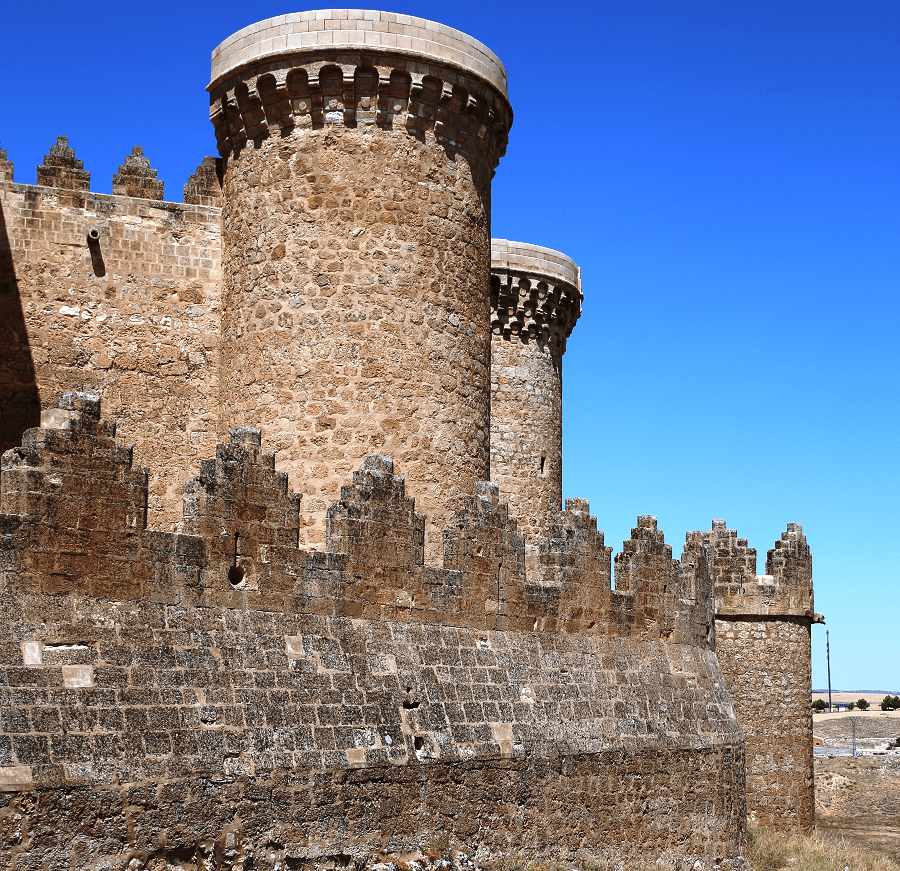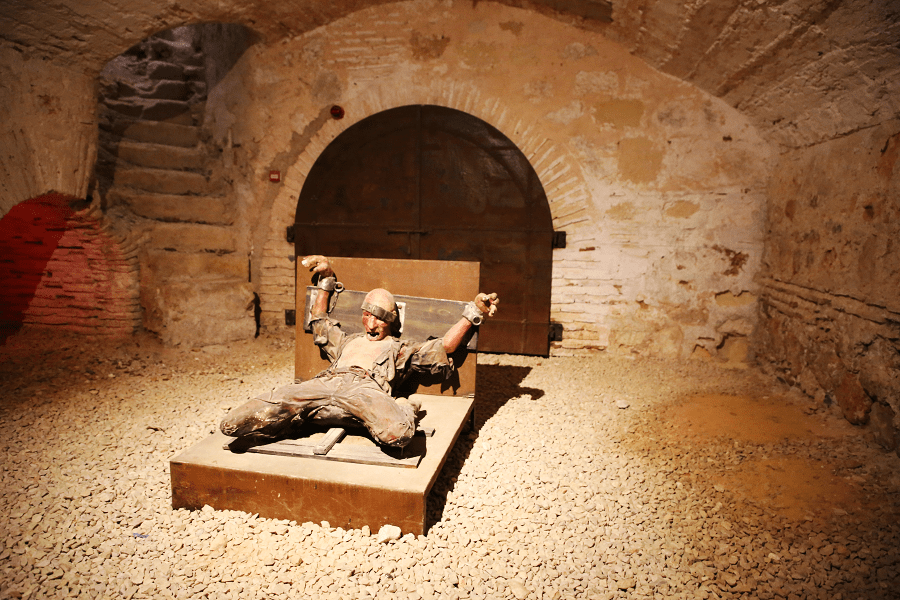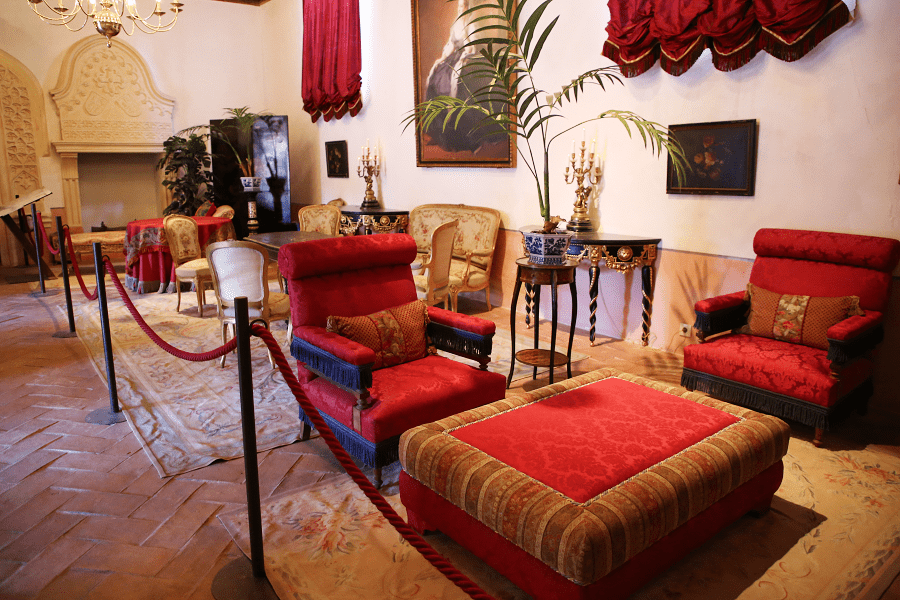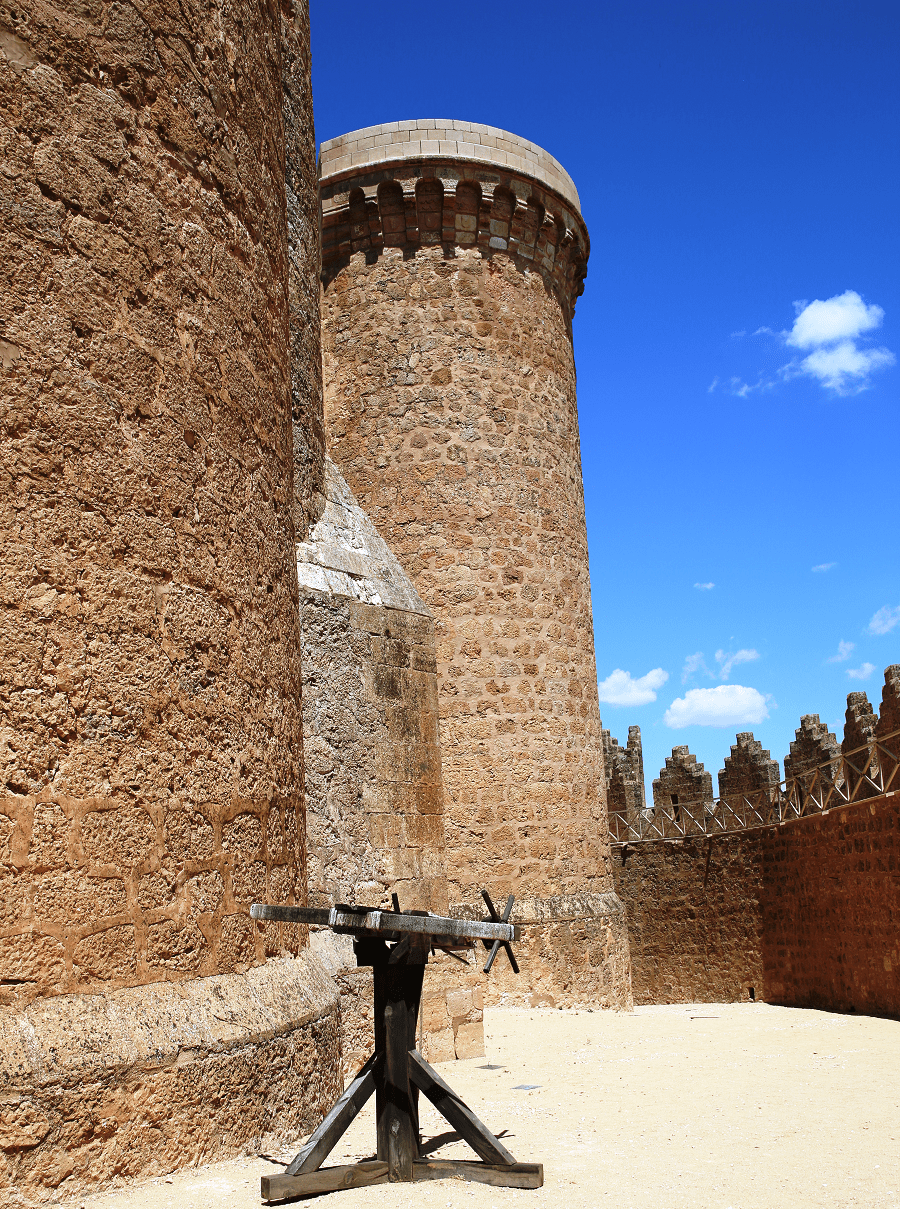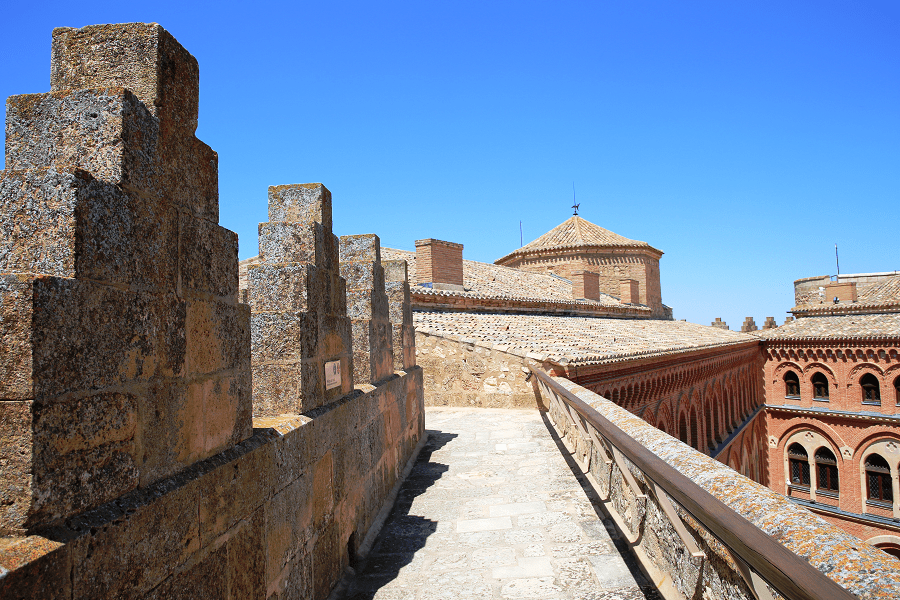The Castillo de Belmonte is a medieval castle on the hill of San Cristobal, just outside the village of Belmonte in the southwest of the province of Cuenca in Spain, Castile La Mancha. It was declared a historic monument within the National Artistic Treasury by a decree of 3 June 1931 and is now a Bien de Interés Cultural.
It was built in the second half of the 15th century by order of Don Juan Pacheco, first Marquis de Villena, during a time of convulsions and infighting in the Kingdom of Castille and so Pacheco wished to build up his territory and build forts around it before worse problems arose.
He probably took on Juan Guas as his architect, who had already worked for him on the Monastery of Santa María del Parral. It was begun in 1456 but remained incomplete on the death of Pacheco. His son Diego Lopez de Pacheco partly continued his father’s work of his father, but mostly neglected the fortress.
The fortress was practically abandoned between the 17th and 18th centuries and was more or less ruinous by the early 19th century. The heiress of the house of Villena, Eugenia de Guzman, better known as the Empress Eugenia de Montijo and her architect Alejandro Sureda began a restoration project in 1857, keeping the exterior in the original style but updating the interior to modern tastes – for example, Sureda used bricks for internal galleries overlooking the inner courtyard. Montijo had spent more than 500,000 pesetas on the project by the time it ended with the fall of the Second French Empire in 1870.
The castle was conceived as a fortress-palace, to satisfy on the one hand the defensive needs of the Marquis of Villena, who wanted to prepare it to adapt it to the advance of artillery.
On the other hand, it had the function of a luxurious residence, in keeping with his desire for power and the influence of Don Juan Pacheco. Its Gothic-Mudejar roofs compete with the castle of the royalty of Segovia.
The castle’s floor plan is very peculiar. It is built on an equilateral triangle with two bodies on two of its sides, and on the other, the keep, a triangle that becomes a nine-sided polygon with six towers at the vertices that form a six-pointed star. The towers are about 22 meters high. The plan of this castle in the shape of a six-pointed star is unique in Spain and Europe.
The main enclosure is surrounded by an artillery barrier of exquisite construction with one hundred firing points, between loopholes. This barrier has three gates, called: Puerta del Campo, Puerta de la Villa and Puerta de los Peregrinos. It also consists of three bastions.
Inside, the Mudejar ceilings of its rooms and galleries must be reviewed. Its roofs and structure make this castle one of the most emblematic in Spain. Its most important room is known as the chapel or ambassadors room. In it there is a Mudejar coffered ceiling with muqarnas comparable to those of the Alhambra in Granada or the Aljafería palace in Zaragoza.
Without a doubt, the castle of Belmonte has made its name in the history of the movies. Since Charlton Heston and Sofía Loren starred in the film El Cid (1961), the castle has been an incomparable setting for other productions:
El Cid, (Anthony Mann, 1961). The castle appears in the background during the tournament.
The lords of steel, (Paul Verhoeven, 1985). It was shot almost entirely in Belmonte. During its filming part of the keep was burned.
Juana la Loca, (Vicente Aranda, 2001). It is the first frame of the film. However, the subtitle indicates that it is that of Tordesillas.
The gentleman Don Quixote, (Manuel Gutiérrez Aragón, 2002). For the filming of this film, many of the interior walls were painted garnet.
The Lord of the Rings, (Ralph Bakshi, 1978). The castle is Helm’s fortress, attacked by the Isengard orcs at the end.
GPS coordinates: 39°33′29″N 2°41′49″W
Address: Calle Eugenia de Montijo, s/n, 16640 Belmonte, Cuenca, Spain
Working days
Tuesday
10AM–2PM
3:30–6:30PM
Wednesday
10AM–2PM
3:30–6:30PM
Thursday
10AM–2PM
3:30–6:30PM
Friday
10AM–2PM
3:30–6:30PM
Saturday
10AM–2PM
3:30–6:30PM
Sunday
10AM–2PM
3:30–6:30PM
Monday
Closed
How to get to?
Distances to the main cities of Castilla–La Mancha:
From Toledo 1 hr 41 min (159 km) via AP-36
From Ciudad Real 1 hr 40 min (152 km) via A-43 and CM-3102
From Albacete 1 hr 24 min (136 km) via A-31 and N-420
From Cuenca 1 hr 12 min (95.8 km) via N-420
From Guadalajara 1 hr 57 min (186 km) via A-3



